In the ever-evolving landscape of cryptocurrency, new tokens rise and fall with remarkable speed, often fueled by hype and speculation. One token that has captured attention recently is Ethena, also known by its ticker ENA. The token has experienced a dramatic price surge in recent weeks, sparking curiosity and excitement among investors and traders alike. But the critical question remains: how high can ENA go?
This comprehensive analysis dives deep into the on-chain metrics, protocol usage, tokenomics, and market dynamics behind Ethena to provide a clear-eyed perspective on its future potential. By evaluating supply and demand factors, comparing ENA’s performance against major benchmarks like Bitcoin and Ethereum, and examining investor behavior, we aim to offer a well-rounded ENA price prediction and token analysis. Whether you’re a seasoned crypto enthusiast or a curious newcomer, understanding these intricate details will help you make informed decisions in this volatile market.
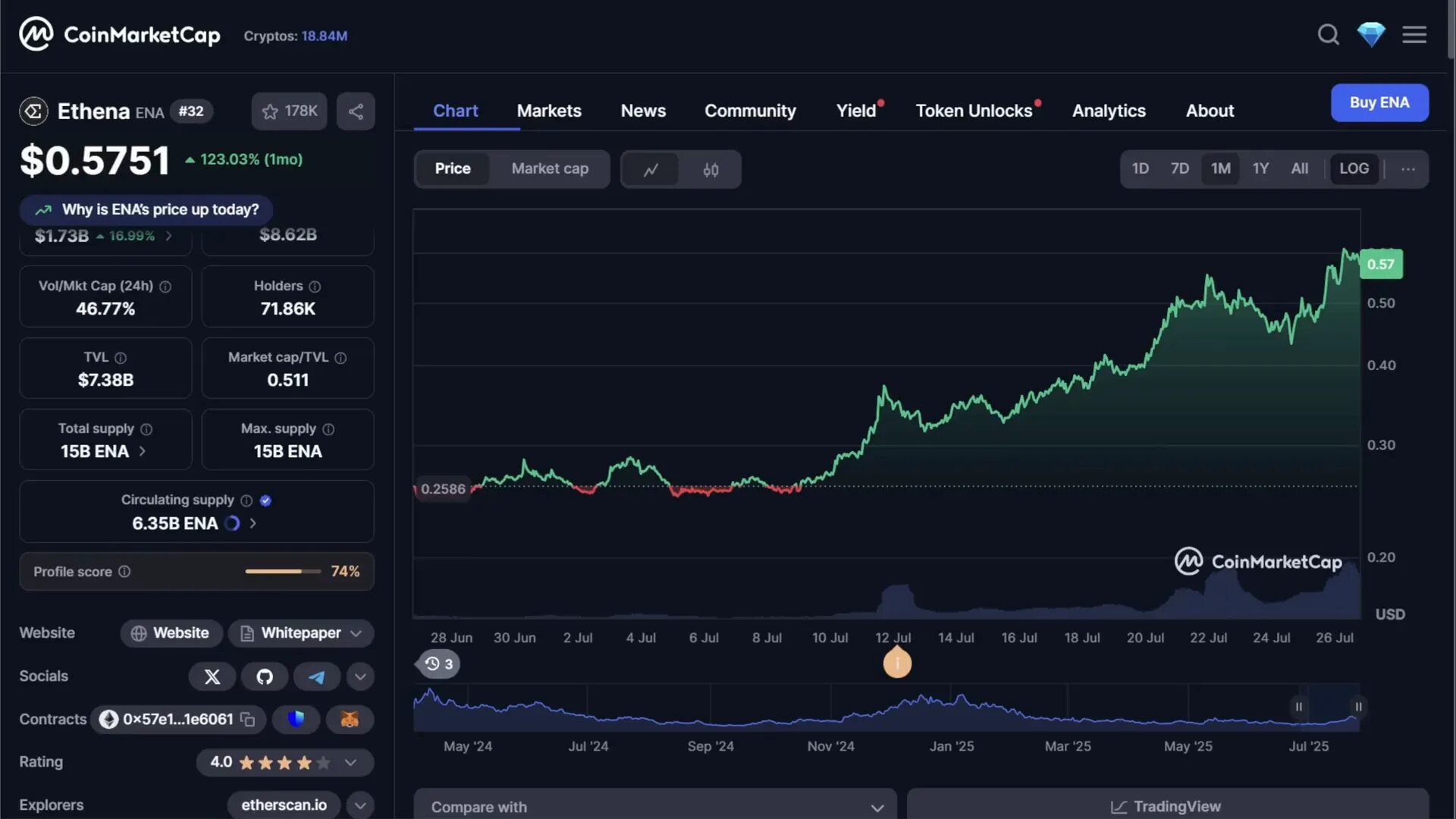
Table of Contents
- Ethena’s Recent Price Surge and Platform Usage
- Benchmarking Ethena: How Does ENA Compare to Bitcoin, Ethereum, and Solana?
- The Role of Token Supply Inflation in ENA’s Performance
- Examining the Buyers: Retail vs. Whale Holders
- Balancing Supply and Demand: What Lies Ahead for ENA?
- Short-Term Price Dynamics and Leverage Risks
- The Broader Crypto Market Context
- A Smarter Strategy: Betting on Market Structure
- Why Influence and Conflicts of Interest Matter
- Conclusion: Where Does ENA Go From Here?
- Frequently Asked Questions (FAQ)
Ethena’s Recent Price Surge and Platform Usage
Ethena’s price has experienced a staggering 123% increase over the past month, currently trading around 57 cents per token. At first glance, this kind of momentum makes it seem like a no-brainer buy. The excitement is further amplified by the rising usage of the Ethena protocol itself.
A key metric to gauge the health of any decentralized finance (DeFi) project is the total value locked (TVL)—the amount of capital currently staked or locked in the protocol. Ethena’s TVL recently hit $7.4 billion and is climbing rapidly, which suggests growing interest and engagement with the platform.
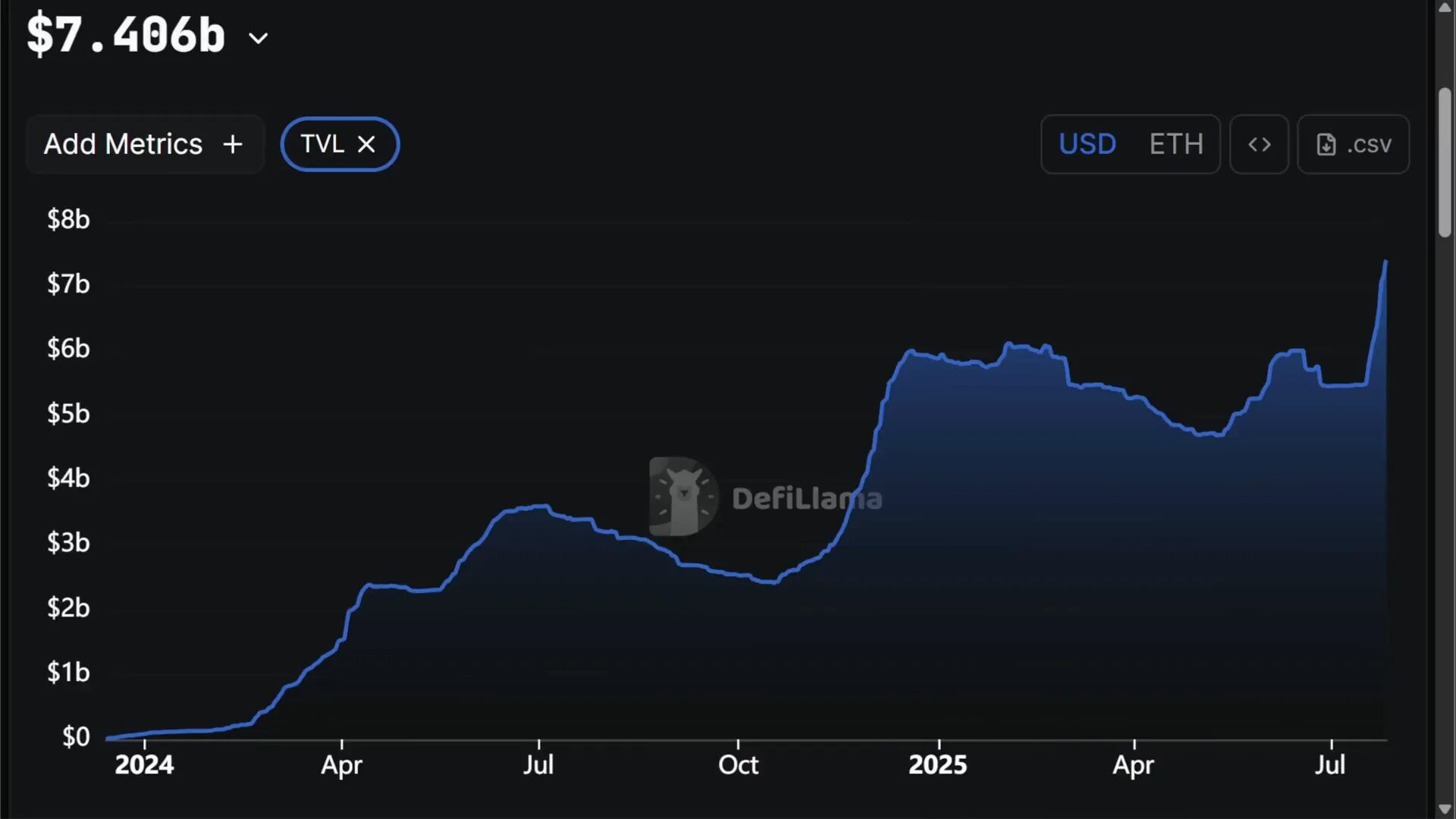
However, it’s important to contextualize this growth. The entire crypto market has been on an upswing, with many tokens appreciating by 10%, 20%, or even 30% simultaneously. This broad market appreciation can inflate TVL figures without necessarily indicating increased real demand or usage of Ethena’s platform.
To address this, it’s more insightful to measure Ethena’s TVL in terms of Ethereum rather than US dollars. When measured in ETH, the picture changes: the TVL peaked at 3.3 million ETH in early April but has since fallen to below 2 million ETH—a drop of roughly one-third.
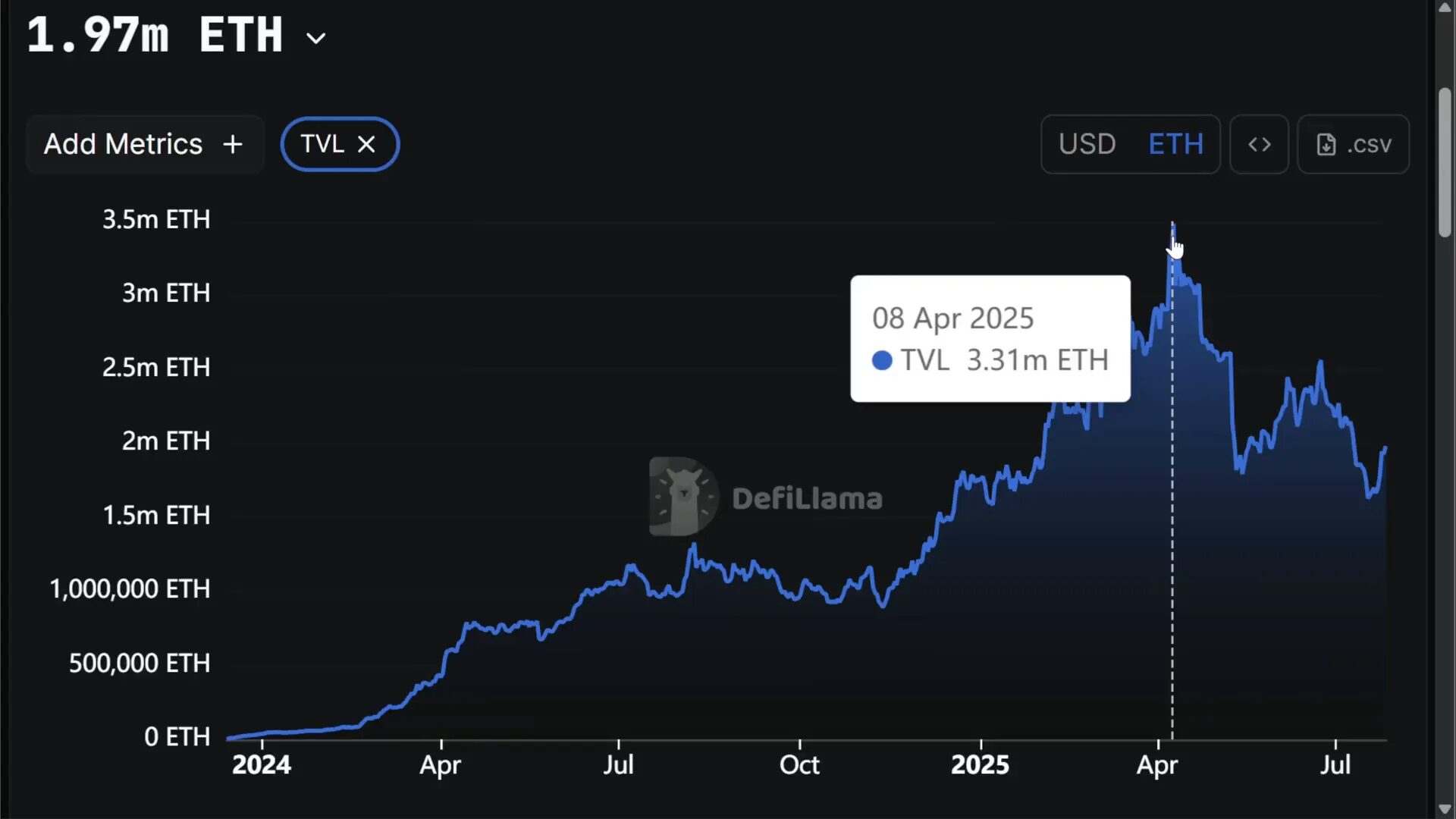
This decline suggests that despite the dollar value rising, the actual usage or engagement with Ethena relative to Ethereum’s value has decreased. This nuance is crucial for anyone considering a long-term investment based on protocol activity rather than just price momentum.
Benchmarking Ethena: How Does ENA Compare to Bitcoin, Ethereum, and Solana?
When evaluating any altcoin, the fundamental question is: does this asset provide long-term outperformance compared to established benchmarks like Bitcoin, Ethereum, and Solana? These three cryptocurrencies are widely regarded as the safest and most reliable crypto assets. If you’re taking on additional risk by investing in a smaller token like ENA, you should expect compensation in the form of higher returns.
Unfortunately, Ethena’s historical performance relative to these benchmarks tells a challenging story. When comparing ENA’s price to Ethereum, the token has underperformed by about 35% over the long term, despite the protocol’s growth.
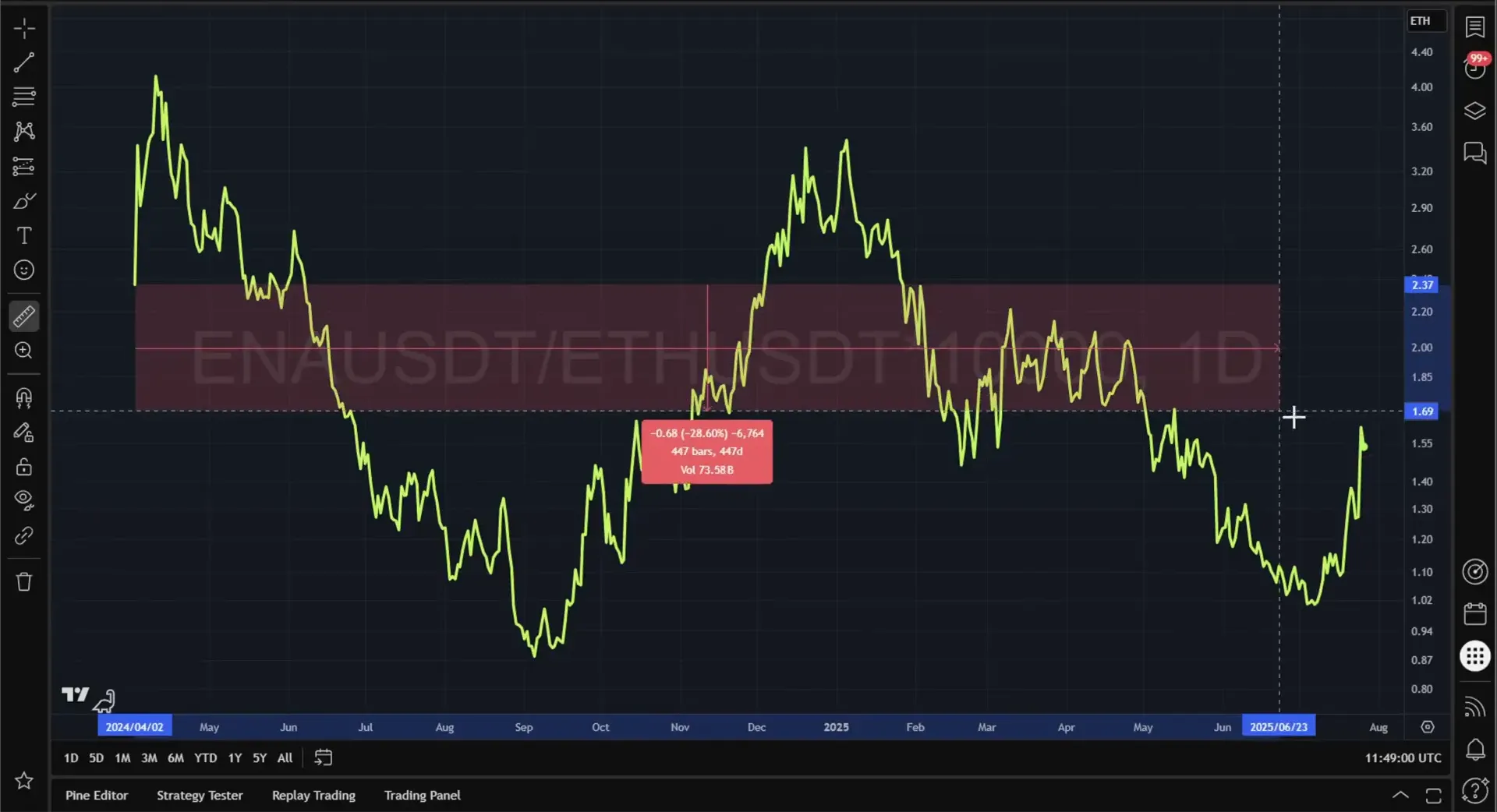
Against Bitcoin, the underperformance is even more severe, with ENA trailing by approximately 58%. This means that investors would have been better off simply buying Bitcoin instead of Ethena over this period.
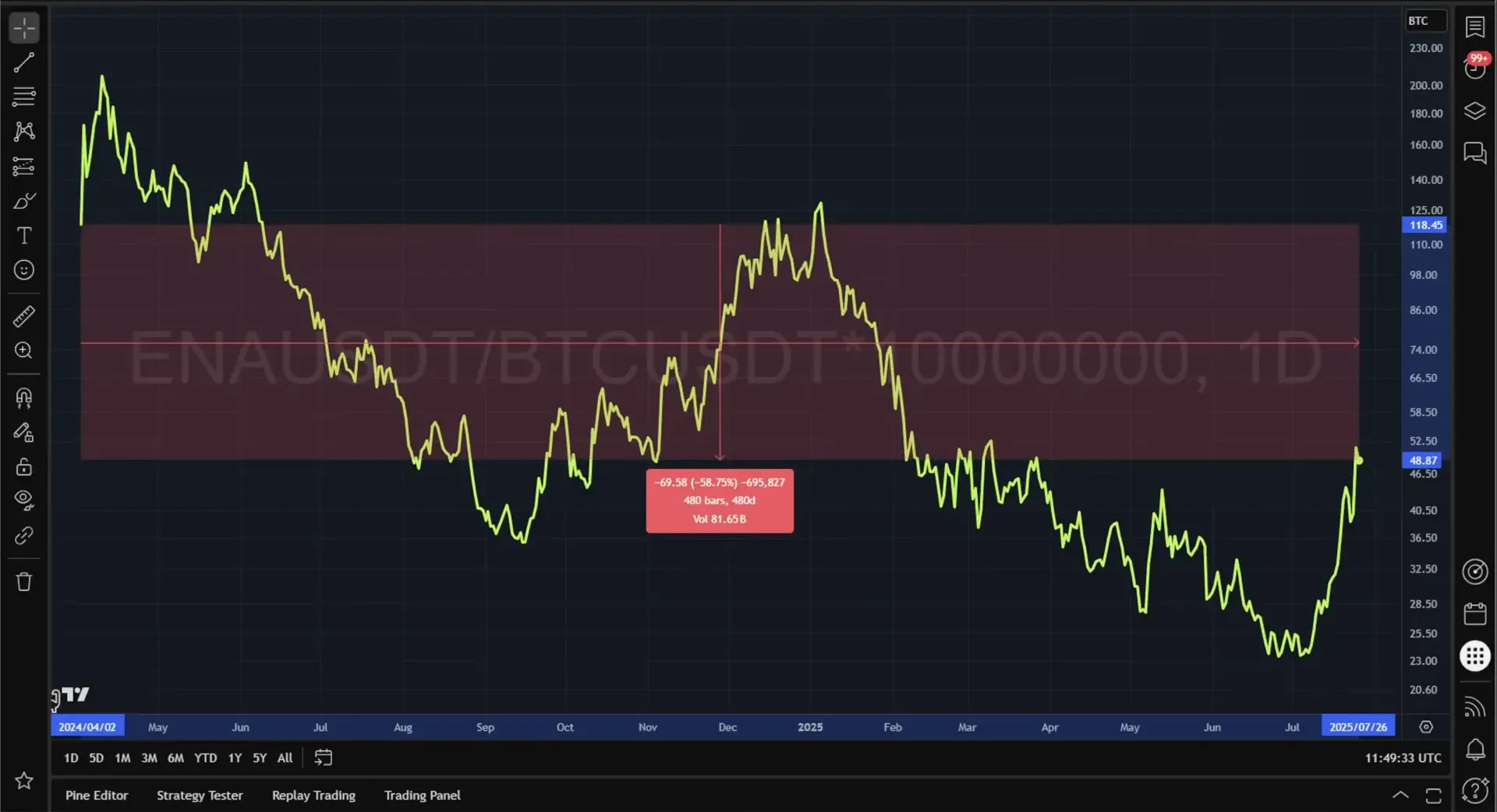
While past performance is not always indicative of future results, these figures highlight a significant hurdle for ENA to overcome if it hopes to justify its valuation as a sustainable long-term investment.
The Role of Token Supply Inflation in ENA’s Performance
One of the primary reasons for Ethena’s underperformance is the rapid expansion of its token supply. This is a common issue across many altcoins where early investors, team members, and insiders receive token unlocks over time, increasing the circulating supply.
Ethena launched in April 2023 with 1.5 billion tokens in circulation. Today, that number has quadrupled to 6 billion tokens. Such a rapid increase in supply can outpace demand growth and put downward pressure on the token’s relative valuation.
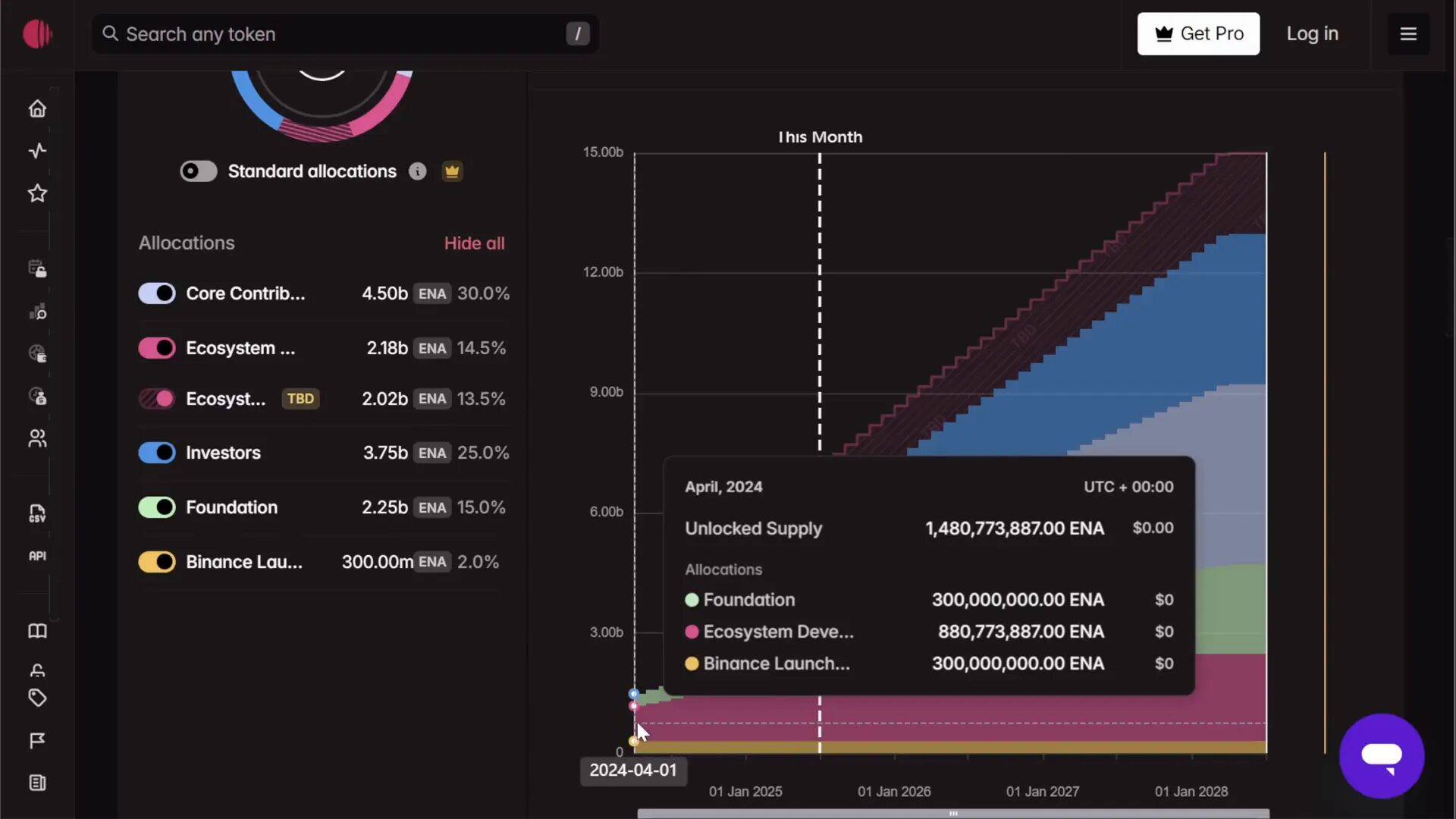
Even if the protocol achieves tremendous success, unchecked supply inflation can prevent the token price from reflecting this growth. Bitcoin is often cited as an exception due to its fixed supply cap of 21 million coins, which supports its value proposition and long-term price appreciation.
Examining the Buyers: Retail vs. Whale Holders
Supply inflation aside, it’s essential to understand who is buying and holding Ethena tokens. Currently, there are about 72,000 holders on the Ethereum blockchain, but not all holders have equal influence on the market.
Wallets can be broadly categorized into three cohorts based on the number of tokens held:
- Retail investors: Wallets holding at least 1,500 tokens (~$1,000).
- Mid-size holders: Wallets holding at least 15,000 tokens (~$10,000).
- Whales: Wallets holding approximately $100,000 worth of tokens or more.
While the number of retail investors is important, whales have a disproportionately larger impact on price movements due to the size of their holdings. Encouragingly, all wallet cohorts have been accumulating ENA tokens at a rapid pace since the start of the year.
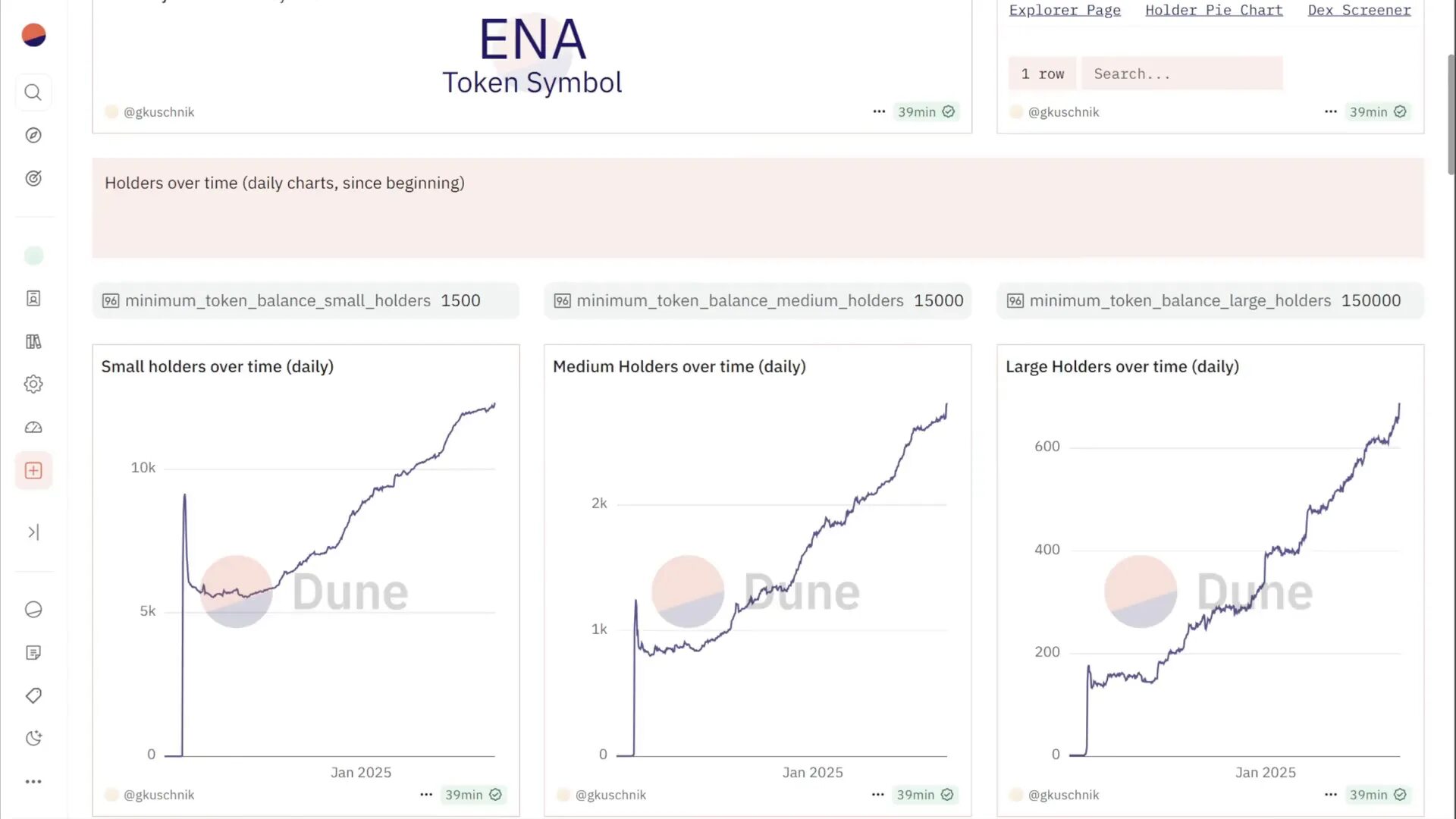
The number of whale wallets has increased by 62% from 400 to 650 since January, even as the token supply has roughly doubled. This suggests that demand from large investors is growing alongside supply.
If this accumulation trend continues, we could see over 1,000 whale wallets within the next 12 months, which would be a positive sign for price stability and potential appreciation.
Balancing Supply and Demand: What Lies Ahead for ENA?
Ultimately, Ethena’s future price trajectory hinges on the balance between supply inflation and demand growth. While the early aggressive token unlock schedule contributed to its historical underperformance, the supply inflation rate is expected to slow down significantly going forward.
With token supply doubling over the past year but projected to only increase by 50% in the next 12 months, there is potential for demand growth to outpace supply inflation. If demand remains strong or accelerates, ENA could finally break out and outperform Bitcoin and Ethereum in the long term.
Short-Term Price Dynamics and Leverage Risks
While the long-term outlook may appear promising, short-term price action is often influenced by leverage and speculative trading, which injects volatility and risk.
Ethena’s spot market volume is robust, with Binance reporting $369 million in trading volume over the past 24 hours. Additionally, perpetual futures—a derivative product allowing traders to bet on price movements with leverage—show $280 million in volume, indicating significant speculative interest.
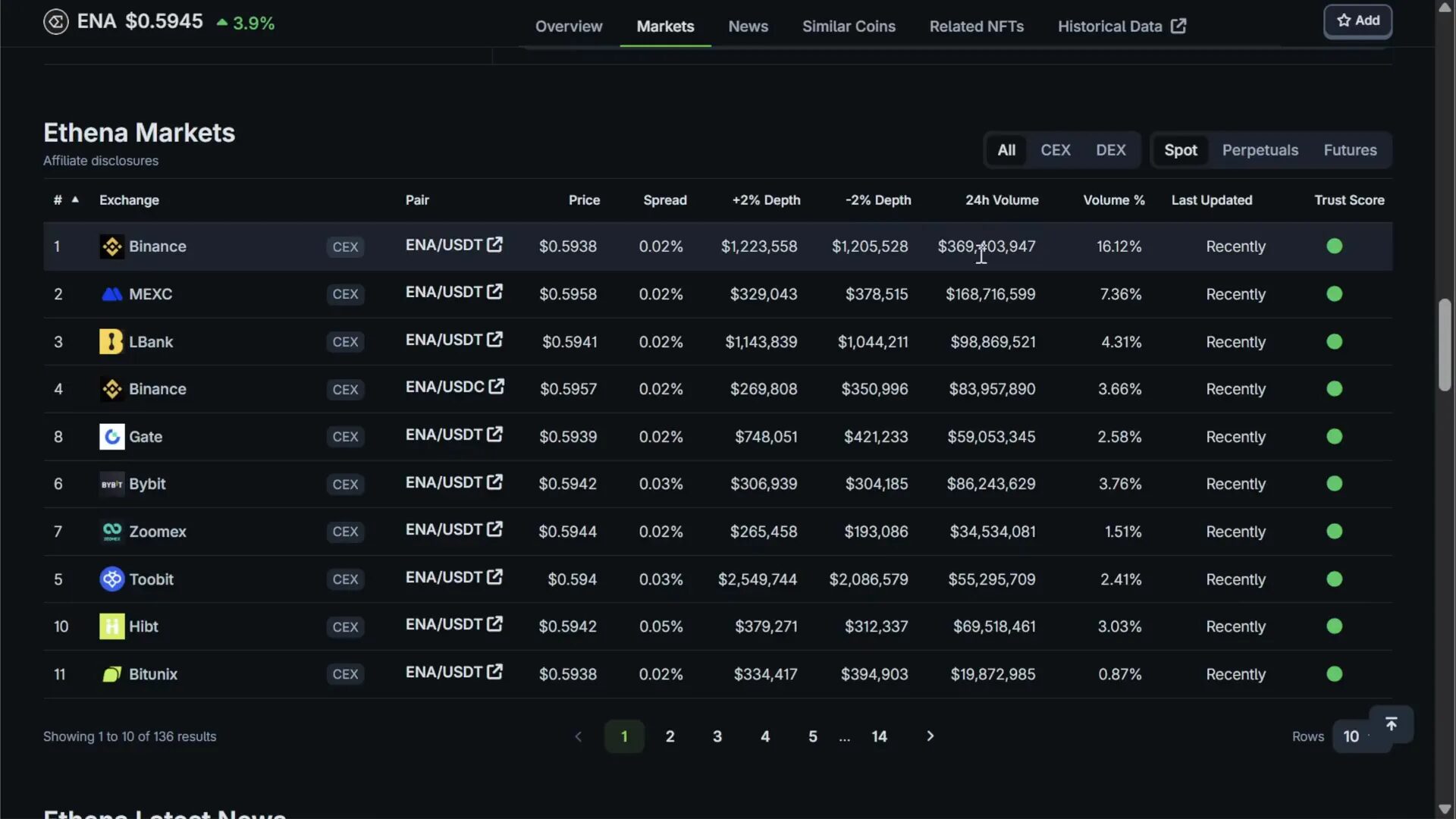
There is a strong correlation between open interest in perpetual futures and ENA’s price movement. When open interest rises, the price tends to climb; when it falls, the price retraces. Currently, open interest is at historic highs, suggesting the market is quite heated and potentially vulnerable to a sharp correction.
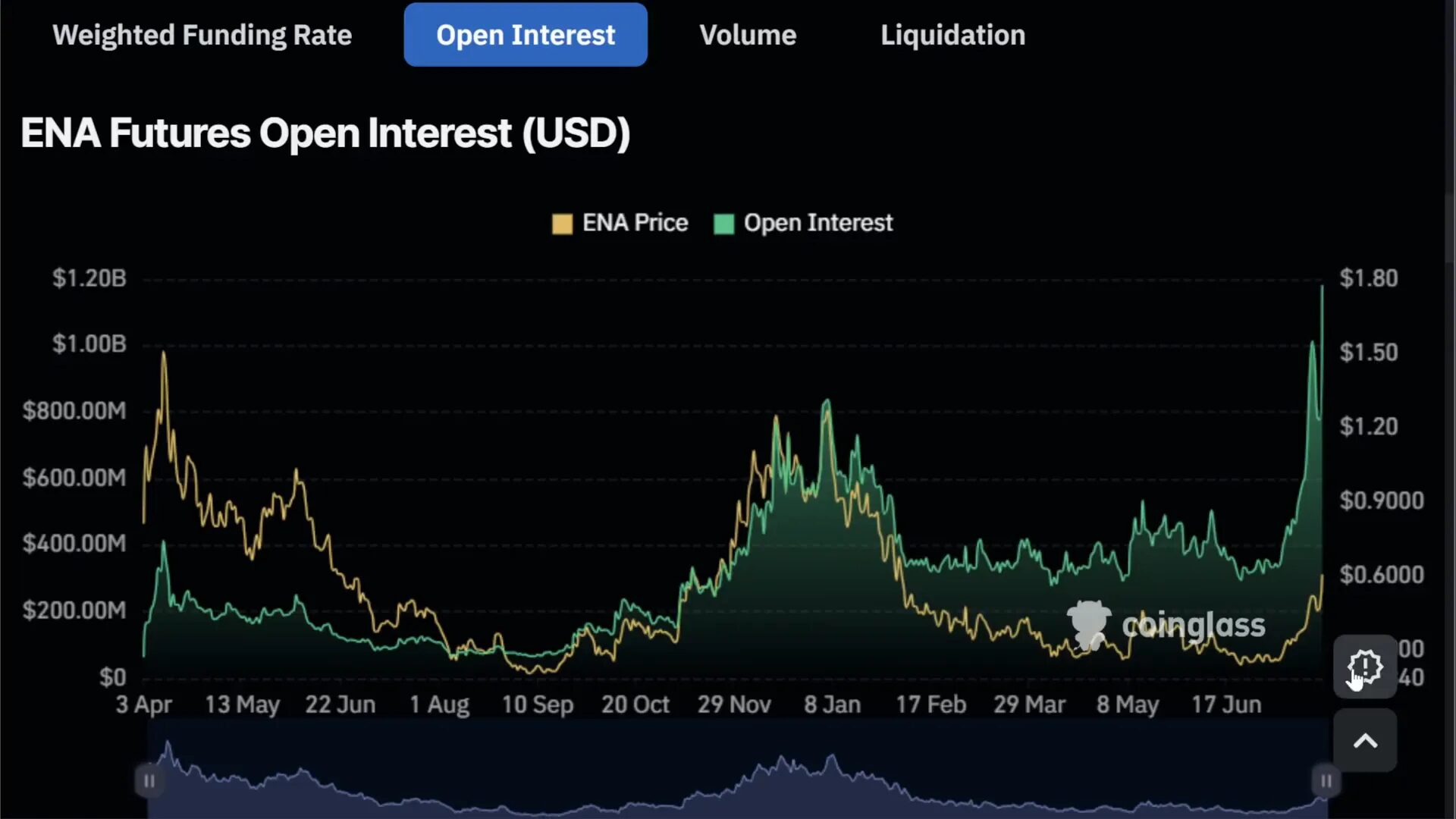
Given this environment, a prudent approach would be to wait for a retracement or dip before entering new positions, focusing on solid assets that can be held long term, particularly when retail attention and trading volume subside.
The Broader Crypto Market Context
Ethena’s story unfolds within the larger context of the crypto market, which has seen significant shifts recently. Bitcoin is approaching all-time highs, but retail interest and search activity remain surprisingly muted. Institutional buying, particularly from Wall Street, has buoyed Bitcoin’s price rather than retail enthusiasm.
The market is consolidating, with capital concentrating on a few winners while many smaller altcoins languish. Over the past year, Bitcoin has doubled in value, but most altcoins have declined, reflecting a challenging environment for smaller projects.
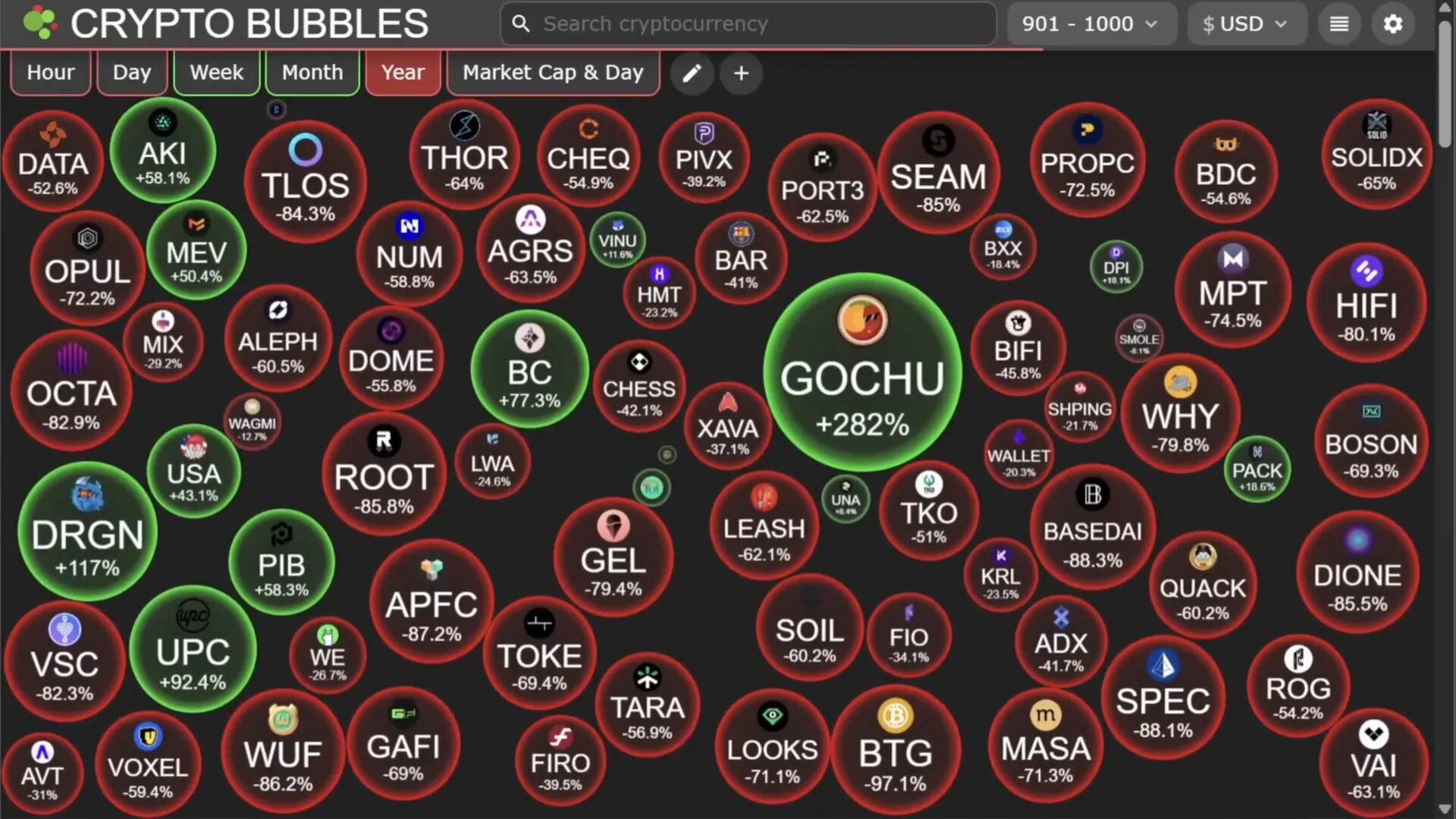
Investors often chase the next big altcoin success story, hoping for tenfold or hundredfold gains, but the odds are stacked against them due to poor tokenomics, supply inflation, and insider selling. Timing the macro environment or picking the right altcoins is notoriously difficult, leading many to lose capital.
A Smarter Strategy: Betting on Market Structure
Instead of chasing elusive altcoin winners or trying to time Bitcoin bottoms, there is a strategy that leverages market structure to tilt the odds in your favor. The key insight is understanding why most altcoins underperform: token inflation.
New tokens flood the market weekly, often from early investors, teams, and venture capitalists who receive token unlocks and then dump on retail investors. This dynamic creates a persistent supply pressure that depresses altcoin prices relative to Bitcoin and Ethereum.
By recognizing this pattern, investors can adopt a strategy of going long on Ethereum or Bitcoin and shorting altcoins with poor tokenomics, capturing steady returns with less volatility.
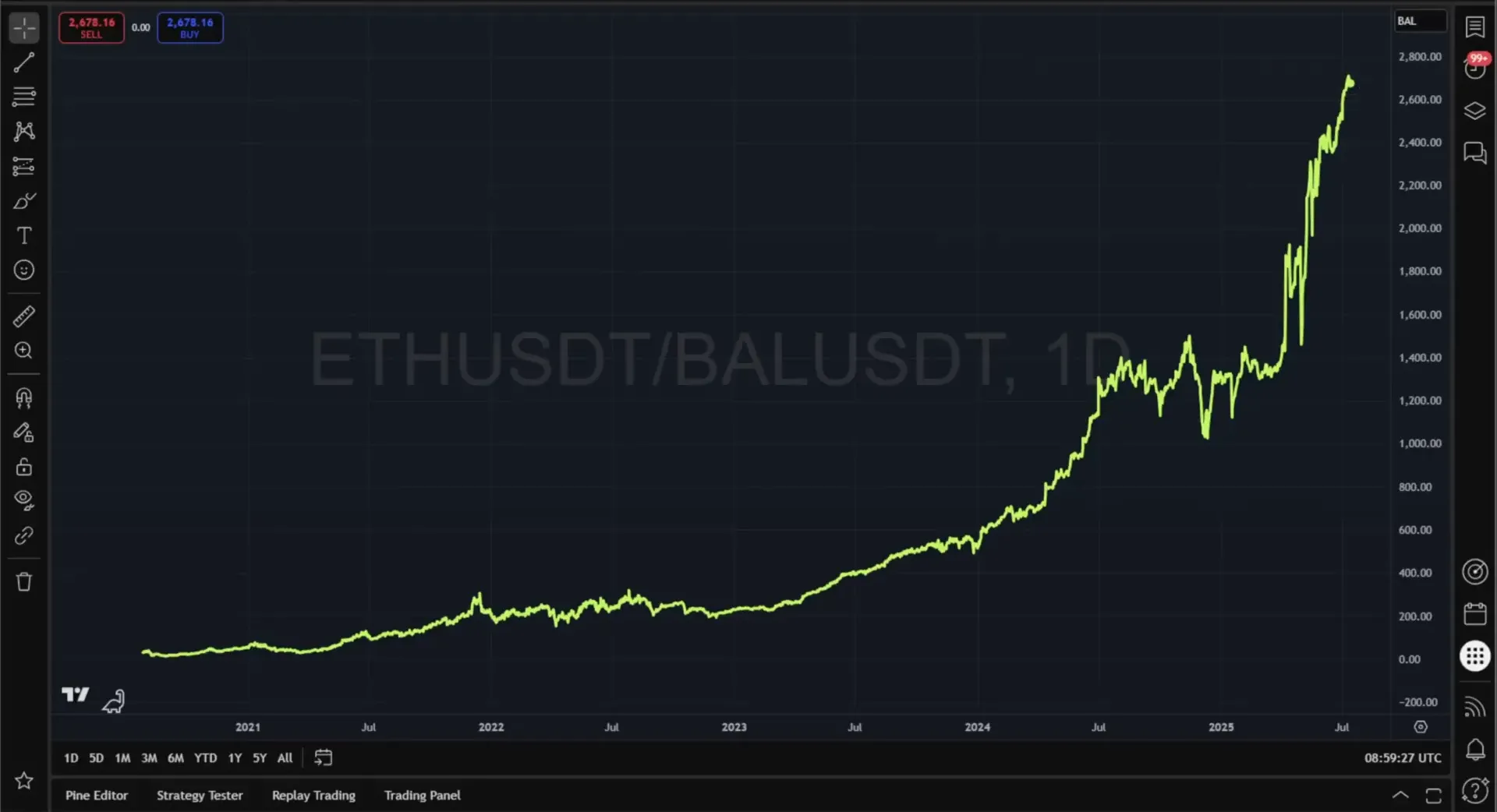
This approach flips the typical altcoin underperformance chart upside down, delivering consistent growth with minimal volatility. It is a method that insiders and venture capitalists have effectively used for years to profit from retail selling pressure.
Why Influence and Conflicts of Interest Matter
Another challenge in the crypto space is the prevalence of compromised influencers who promote tokens in exchange for money or token allocations. This conflict of interest can mislead retail investors into buying overhyped projects with poor fundamentals.
For example, some influencers have been known to charge tens of thousands of dollars for paid promotions, which naturally biases their recommendations. It’s important to be aware of this dynamic and focus on building skills to distinguish genuine signals from noise.
Conclusion: Where Does ENA Go From Here?
Ethena’s recent rally is supported by growing platform usage and increasing accumulation by whales, but it faces headwinds from historical token inflation and short-term speculative leverage. The long-term outlook depends on whether demand can outpace supply growth and whether the token can finally outperform major benchmarks like Bitcoin and Ethereum.
Investors should approach ENA with a balanced view, recognizing the risks of short-term volatility while keeping an eye on fundamental trends. Waiting for a retracement before buying and focusing on long-term holding during periods of low attention and volume may be the best path forward.
Ultimately, understanding the broader market structure and tokenomics is crucial for making informed decisions in the crypto space. Ethena’s journey reflects the complexities of altcoin investing and the need for strategic approaches that go beyond hype and speculation.
Frequently Asked Questions (FAQ)
What is Ethena (ENA) and why is it gaining attention?
Ethena is a crypto token that recently surged over 123% in price, attracting interest due to its rising platform usage and significant total value locked (TVL). It operates on the Ethereum blockchain and is part of the decentralized finance ecosystem.
How does Ethena’s performance compare to Bitcoin and Ethereum?
Historically, Ethena has underperformed both Bitcoin and Ethereum, trailing Ethereum by about 35% and Bitcoin by 58% over the long term. This is largely due to rapid token supply inflation and market dynamics.
What causes Ethena’s token price to underperform?
The main factor is token inflation from early investor unlocks and team allocations increasing the circulating supply faster than demand grows. This supply expansion puts downward pressure on the token’s relative price.
Who are the main holders of ENA tokens?
There are approximately 72,000 holders, including retail investors with smaller holdings and whales holding significant amounts (around $100,000 or more). Whale accumulation has increased by over 60% this year, indicating growing institutional interest.
Is it a good time to buy Ethena now?
Short-term trading is risky due to high leverage and speculative activity driving volatility. It may be wiser to wait for a price retracement before buying, focusing on long-term holding strategies during periods of lower market attention.
What is a better investment strategy than chasing altcoin pumps?
A strategy that bets on the market structure—going long on Bitcoin or Ethereum and shorting altcoins with poor tokenomics—has historically delivered more consistent returns and lower risk than trying to pick winning altcoins.
How can investors protect themselves from misleading crypto promotions?
By critically evaluating tokenomics, understanding market dynamics, and avoiding reliance on paid influencer promotions, investors can build skills to separate genuine investment opportunities from hype and conflict of interest-driven noise.



